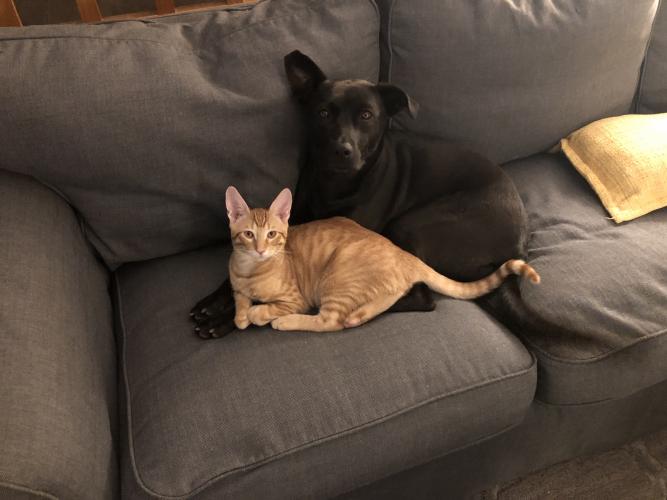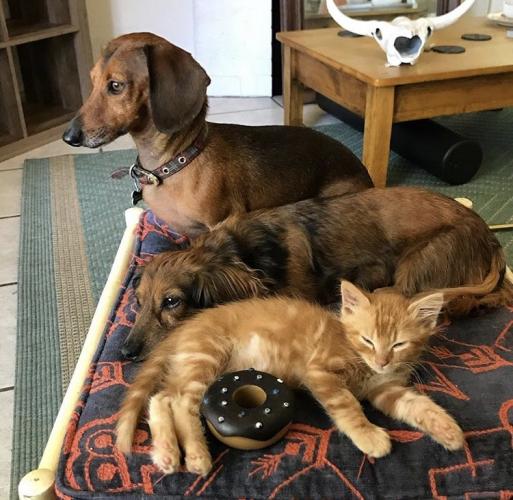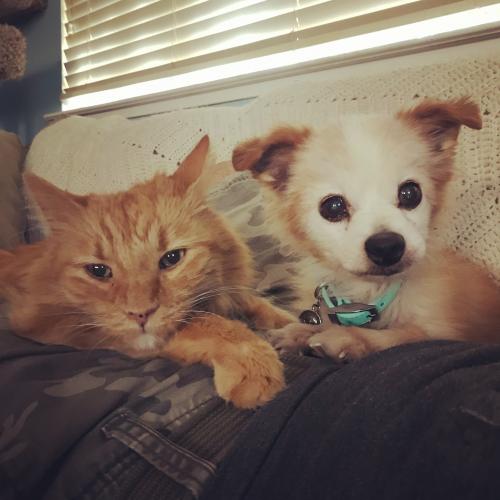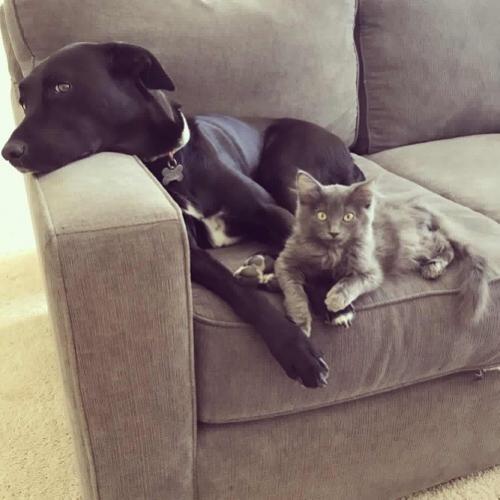So Happy Together
How to Introduce Furry Friends the Right Way!
Most animal lovers have at least one cat or dog — or several of each! Whether you are a proud dog family looking for a cat, or a not-so-crazy cat person looking for your first dog, you want to make sure the first introduction is a good one.
How do you match up the right animal for your family? If looking for a dog, you may want to search for one that has had a positive experience living with cats in the past. A good way to tell on sspca.org/dogs is looking for the quote “I have lived with cats in my previous/foster home!” However, you will often find many of the dogs at the Sacramento SPCA have no experience living with cats in the past. What is the best way to introduce this new family member to a cat at home?
To start, you will need to consider both animals’ personalities. Have a playful cat? You may want to search for a dog who is equally playful, and steer clear of an elderly, quiet dog. Do you have your own version of “Grumpy Cat” at home? Don’t make him even grumpier by bringing home an energetic dog that will chase him around the house.
Once you have found a potential match, it is important to take things slowly. Letting a cat and dog loose together right off-the-bat can lead to a disaster. Here are a few steps you can take to help the introduction be successful:
Step 1: Separate the Animals
Over the span of a few days, rotate which animal is loose and which is confined (to a crate or separate room) to allow them to investigate each other’s scent. If leaving the house, ensure that the dog or cat is securely separated so that no accidental meetings will happen when no one is home.
If you notice the dog appears obsessive (digging at barrier, barking, growling) for longer than a few days, you may want to contact us for help.
After a few days, if both animals seem calm with the process, move on to the next step!
Step 2: Make Leashed Introductions
Now the cat and dog can meet! But to make sure this is a safe interaction, keep the dog securely on a leash. You can reward good behavior (both giving and receiving a polite sniff) with a treat for the dog!
Signs that it is going well? A calm cat and dog, a cat that is eating, using the litterbox normally and relaxed, and a dog that is not barking consistently at the cat. After a few days to a week, if you are noticing these great signals and everyone seems happy, it is time to move to Step 3!
Signs that you need to slow down? Any signs of fear or aggression by either the cat or the dog. You may need to stay at step 2 (and continue to keep the animals separated when alone) for anywhere from a few days to a few weeks.
Step 3: Allow Supervised Interactions to lead to Unsupervised Interactions
Now you can allow the dog and cat to roam freely together while supervised. It may be a good idea to provide safe spaces for the cat, like a cat tree, where she can still be in the same space, but be out of the play zone! Cats enjoy high spaces and love surveying a situation from the tallest spot in the house. After about a month of successful supervised interactions and you are confident that the animals will not hurt each other, you can move on to unsupervised interactions!
Warning Signs
There are a few signs that indicate the match is not a good one:
- If the dog is overly focused, ignores commands, or lunges when the cat moves, this is a dangerous match. If this is your own dog, you should probably avoid any cats in your home. If this is a new dog for your cat, you should try another match.
- If the cat continues to growl, hiss, or swat at the dog (even with multiple breaks and several days of trying), you may need to try a different match. If the cat continues this behavior with all dogs that he meets, he may prefer to live a dog-free life.
For more helpful handouts, or to speak to a member of our behavior team, visit sspca.org/behavior!
Information adapted from americanhumane.org





Comments
Post new comment